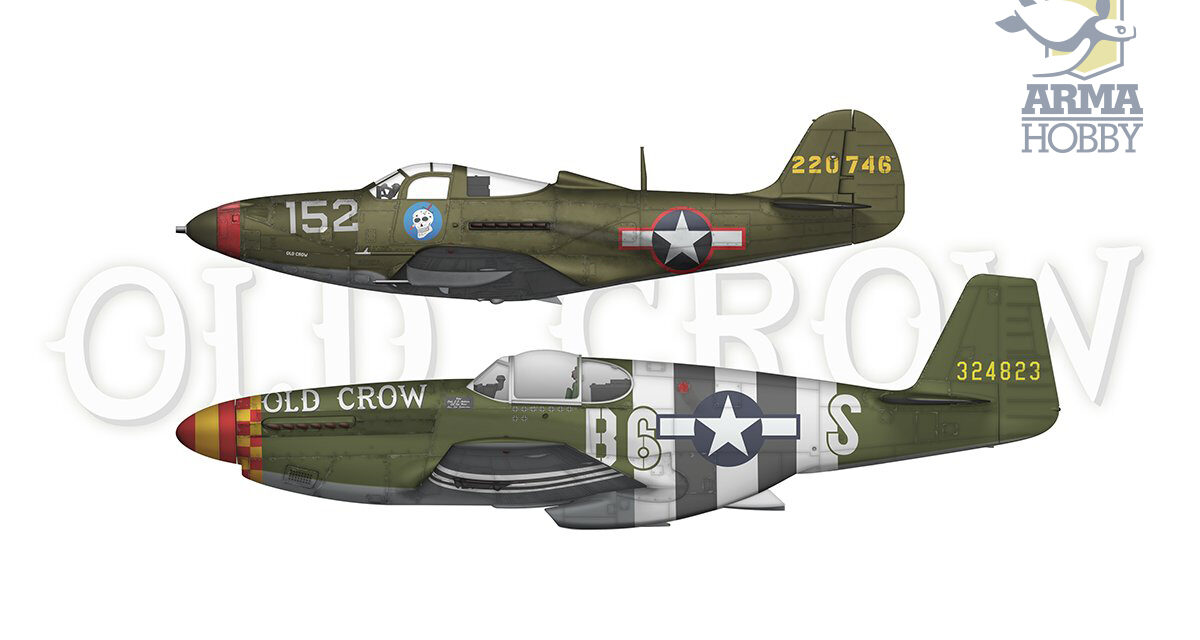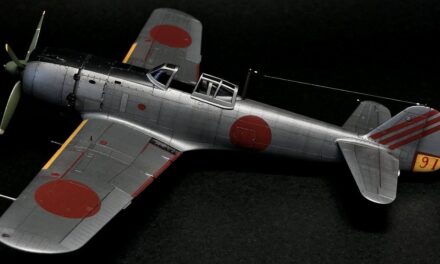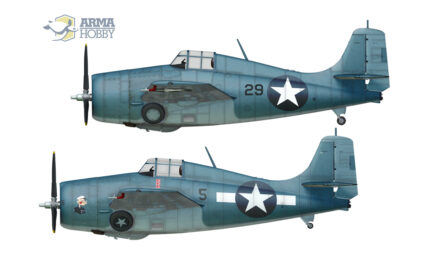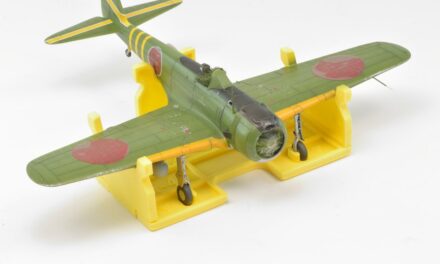On December 2. 2022, the last American triple-ace and the oldest living American fighter ace Col. Clarence E. ‘Bud’ Anderson was promoted to the honorary rank of brigadier general. Air Force Chief of Staff Gen. CQ Brown, Jr. presided over a ceremony at the Aerospace Museum of California.
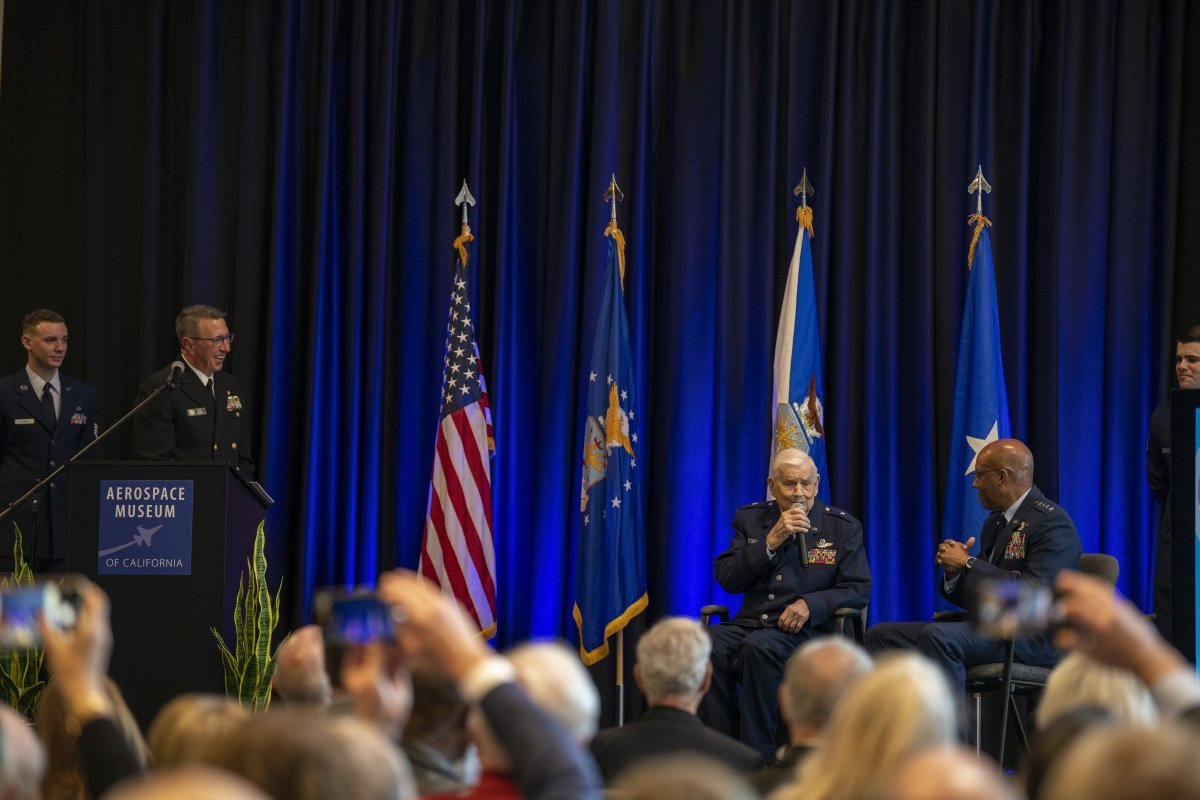
Fot. US Air Force official/Public Domain
The first part of the article about this extraordinary aviator is a fascinating story about his duty over Europe – written by Jim Roeder, an expert on the history of the 357th USAAF Fighter Group. In the second part, Jim will detail the victories of ‘Bud’, the planes he flew and their paint schemes.
Clarence E. Anderson was born on 13 January, 1922 in Sacramento California. He was raised in nearby Newcastle on his family’s farm. In 1941, while attending Sacramento Junior college he entered the Civilian Pilot Training Program. He earned his Private Pilot’s License. He joined the Army at the age of 20 in 1942, entering the Army Aviation Cadet Program. After completing primary Flight Training at Lindberg Field, San Diego, California. He was assigned to Luke Field, Arizona for Advanced Training.
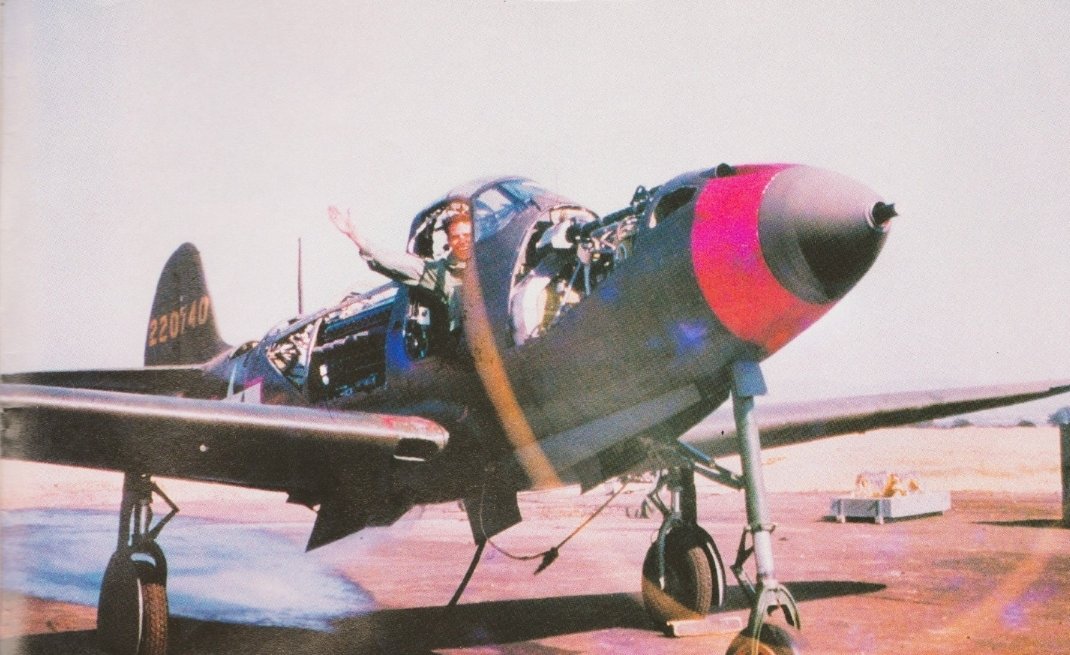
Upon graduating from Advanced Training in September 1942, he received his wings and commission as a 2nd Lieutenant. He was then assigned to the 328th Fighter Group. He and several other 28th FG pilots were transferred to the newly formed 357th Fighter Group at Hamilton Field just north of San Quentin Prison and San Francisco California. Initially he was flying P-39Q Airacobra named “OLD CROW” – after the Kentucky Whiskey.
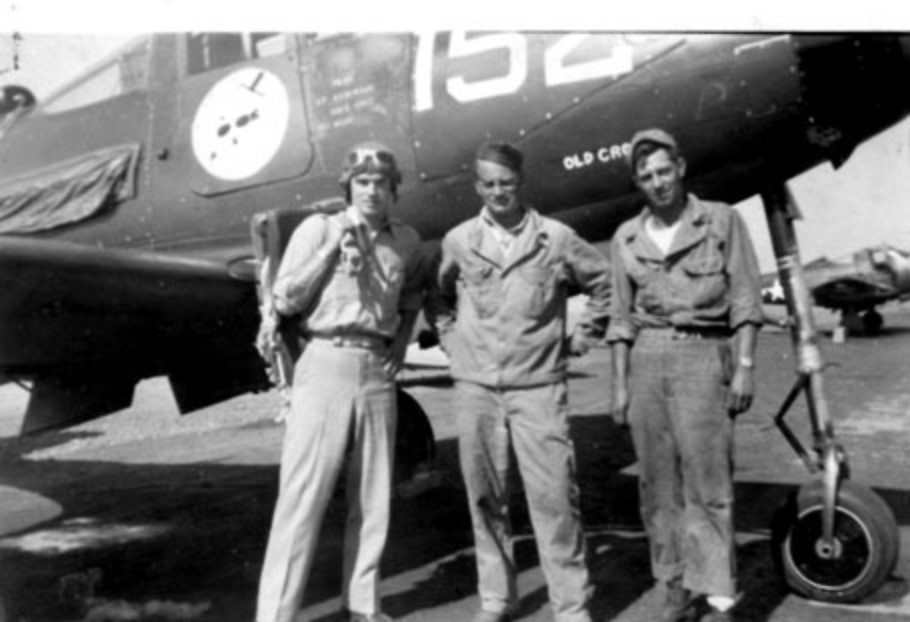
Bud his ground crew at the first “OLD CROW” – P-39Q Airacobra
To war over Europe
On 08 February 1944, Bud flew his first combat mission, an orientation mission to Frankfurt while flying with the 354th FG. Bud flew as wingman to a “veteran” (the 354th had flown their first combat mission in January 1944) 354th Flight Leader. The mission was a Bomber Escort to Frankfurt Germany. Just as his leader began an attack on an FW 190, someone called out “Mustang! Mustang! There’s one on your tail!”. The proper call etiquette would have been to identify and address the endangered Mustang by it’s appropriate call sign. For whatever reason, the anonymous pilot failed to do that. Rather, he continued yelling “Mustang, Mustang there’s one on your tail”. Consequently, Anderson’s leader broke off the attack. The anonymous pilot calling the warning was never identified.
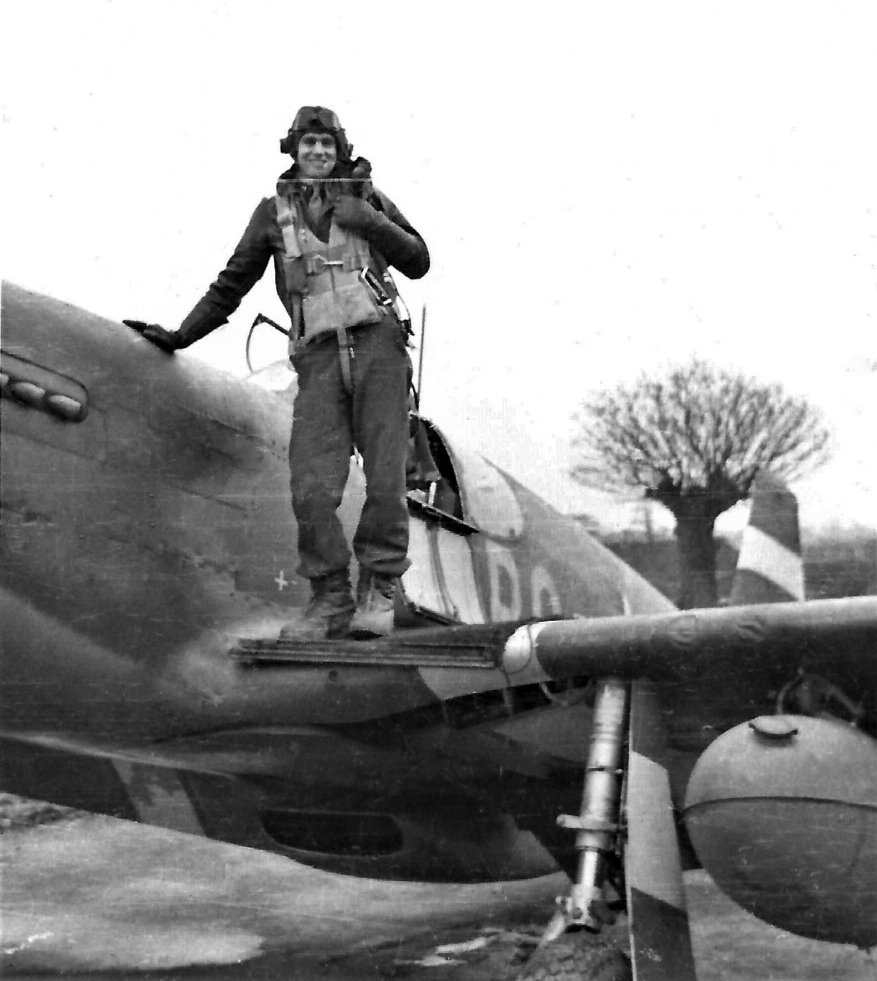
Bud on the wing of his first “OLD CROW” P-51 B Mustang
On 20 February 1944, Bud attacked an ME 109 north of Dresden Germany. He was given credit as “Damaged”.
Bud’s first victory was scored on 08 March 1944, on an Escort mission to Berlin. NW of Hannover, he engaged a ME 109. After a frustrating period chasing the ME 109 and attempting to get a shot off while flying interlocking circles, Bud changed tactics. He pulled up and around and fired as the ME 109 went beneath him. When he saw it again, it was streaming coolant. Bud watched as the pilot bailed out and the ME 109 crashed into the ground.
A Heinkel for four
On 11 April 1944, Bud scored another victory West of Hannover when he attacked a Messerschmitt for which he was credited with Damaged. He attacked another ME109 and after observing hits, he watched the pilot bail out. Shortly after, he observed an HE111 low to the ground. Although he had position on the HE111 and could have shot it down himself, he called for each of the 3 pilots in his flight to make a pass and fire on the HE 111. He and his flight then took turns attacking it. They all shared credit for the victory. ¼ credit was given to each of the 4 pilots. This was the only German Bomber Bud saw in the air during his two combat tours. Bud could have rightfully shot the HE 111 down by himself and might have done so were it another fighter. However, as it was, he elected to allow the rest of the flight a chance to attack an enemy plane. As a Flight Leader Bud felt a responsibility to his men to teach them how to attack an enemy aircraft. So, he allowed each a turn at attacking the HE 111. Each pilot received ¼ victory for their part in downing the HE 111.
On 30 April he shot down an FW 190 SE of Orleans France.
The new Mustang
On 08 May 1944, Bud flew a mission to Berlin in his new “Old Crow”. On this mission, he shot down an FW190 over Soltau Germany. The new plane was “OLD CROW” 4, (P-51 “OLD CROW 3). It was painted in RAF Dark Green and Medium Sea Grey and had the Group ‘s red and yellow markings. It also had a Malcolm Hood. Flying this Mustang, he scored the majority of his victories achieved on both tours. He flew this P-51 on D-Day and until he completed his first Combat Tour. He then returned home for a 30 day leave after which he returned to the 357th.
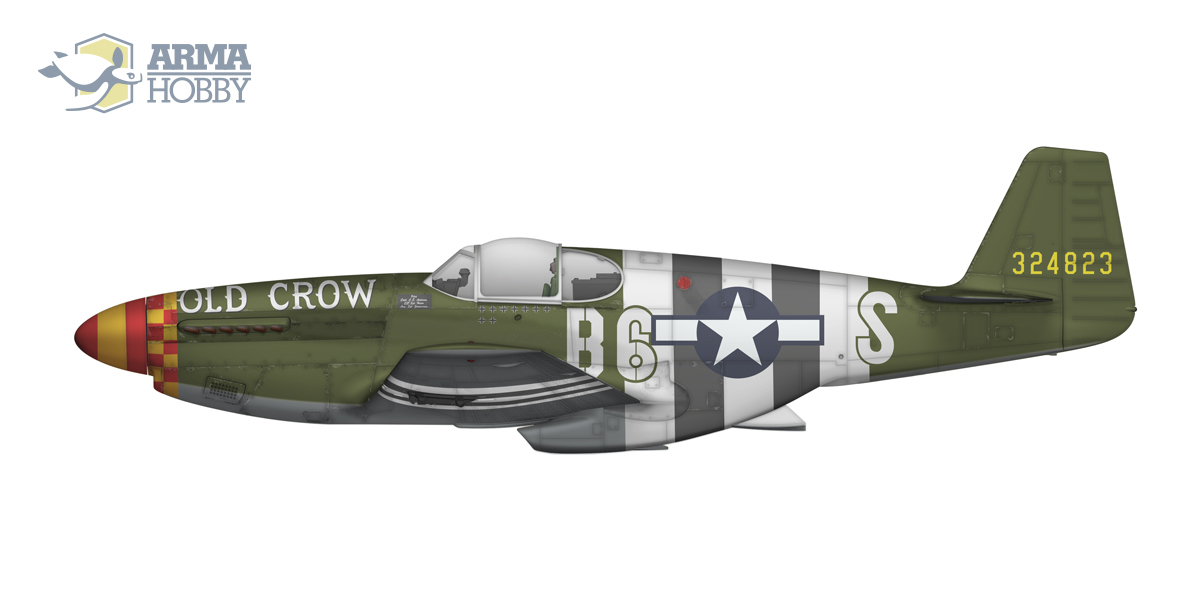
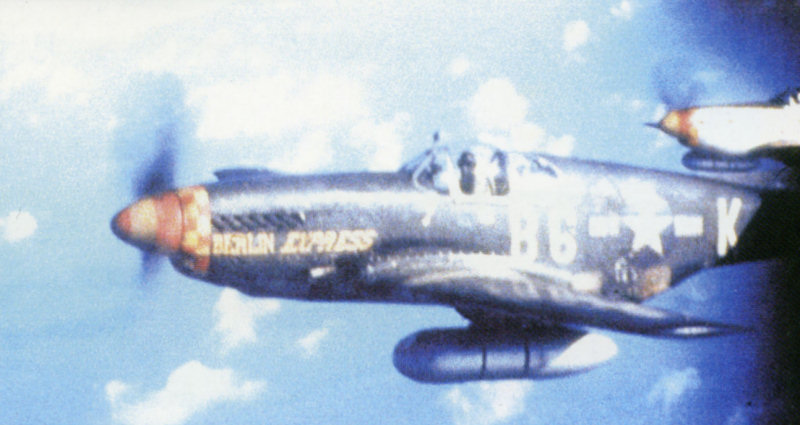
On 29 June, he was credited with shooting down 3 ME 109’s Southwest of Leipzig Germany. On 07 July, he shot down a ME 109 N of Leipzig Germany. This was his last victory of his first combat tour with the 357th. On 27 November, while flying his last “OLD CROW” , a P-51D. (P-51 “OLD CROW” 5), his 5th and last WW2 aircraft named “OLD CROW. His last victories of the war came on 05 December, when he shot down two FW 190’s and was credited with another FW 190 as probable while West of Berlin.
The last mission – Switzerland!
During the battle of the Bulge, the weather was extremely bad. From 06 December to 13 January, the Group flew only 17 missions. The pilots shot down only three German aircraft and lost five Mustangs.
On 14 January the Luftwaffe came up in force and in what Anderson called the greatest aerial battle of the war in Europe, the 357th shot down 56 ½ German planes. One of the 56 ½ victories was shared with another Group. The 357th lost 3 Mustangs. The 14 January mission was probably Bud’s most memorable mission and it also was his last mission of his second tour. Contrary to a mistake in Yeager’s book by an editor, Bud and he never flew as a pair. Bud was a flight Leader, Yeager became one and both had lead the Squadron and the Group on combat missions. However, on what was the last mission for both, they decided to fly together. At that time, Anderson was Operations Officer, so he listed Yeager and himself as spares on the mission roster. Listing themselves as spares meant if no one aborted, they were free to return to Leiston. Yeager had a different idea and the night before that final mission, they came up with a plan. The next morning when no one aborted, rather than return to Leiston, they went off on an adventure.
Yeager had been shot down early in his first tour and managed to evade and make it over the Pyrenees from France into Spain. Yeager was considered as something of an authority on crossing mountains. Just before Christmas, Yeager had been summoned to Geneva for a conference. He had been asked his opinion on a plan to smuggle 800 Allied airmen from Switzerland over the Alps into France. On his return he told Anderson how pretty the area was and wished he could show it to him.
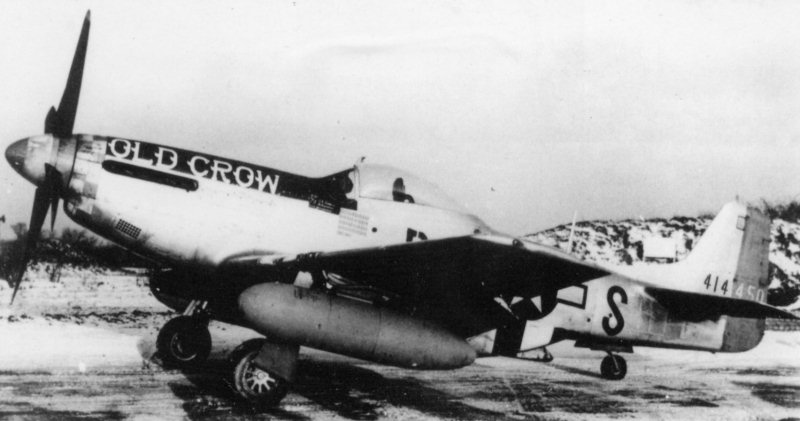
The last Bud’s Mustang “Old Crow” after the ground crew stripped the RAF Dark Green Paint from it
The next morning, they put Yeager’s plan to action. Once they were cleared to return to Leiston, they chose not to do so. Once they crossed the Dutch coast, they turned right and flew south 500 miles into Switzerland. Anderson said “Chuck was the guide and I was the tourist”. Amidst their frolicking, they dropped their tanks onto Mount Blanc and in what “seemed a good idea at the time”, attempted to set the tanks on fire.
They then flew to Lake Annency and found the hotel at which Yeager attended the conference. Bud stated “We buzzed the hotel, low enough and fast enough to tug at the shingles” they then “zoomed o ut over the water, right on the deck, our props throwing up mist. Coming home, we meandered all over France, just above the treetops”. Anderson said “it had been one hell of a wonderful day”.
It was late when the pair returned to Leiston. They were the last two planes back from the mission to Berlin having flown more than a thousand miles. Since the pair were the last returning from the mission and their wings were streaked black from firing their guns, the crowd meeting them assumed they had been involved in the Group’s greatest air battle. Bud’s crew chief, Heino, jumped up on the wing and started asking: ‘’The Group got more than 50 today”, “Must have been something”. “How many did you get?” Bud said he replied “None” in a small strangled voice. He said he felt sick.
The Triple Ace
When the Group arrived at Raydon Airfield, Bud was just a little more than a month shy of his 22nd birthday and a First lieutenant. On the day of his last mission he was a week shy of his 23rd birthday, a Major and 364th Fighter Squadron Commanding Officer. He had flown 116 combat missions without an abort and shot down 16 ¼ German aircraft

Bud Anderson in his P-51B “OLD CROW” cockpit
Bud continued to serve in the USAAF and later, the USAF. He was a Test Pilot, he and another Test Pilot each hooked the fighters to the wing tips of a B-29. He also flew an F84 that was dropped from a trapeze mounted in the bomb bay of a B-36. Then he approached the B-36 and hooked onto the trapeze. He ,commanded an F-86 Group in Post War, Korea, an F-105 wing on Okinawa in the 1960’s. In 1970 he commanded an F-105 Wing in Viet Nam, flying combat strikes against Communist Supply lines at the age of 48. He retired from the Air Force as a Colonel after 30 years of service.
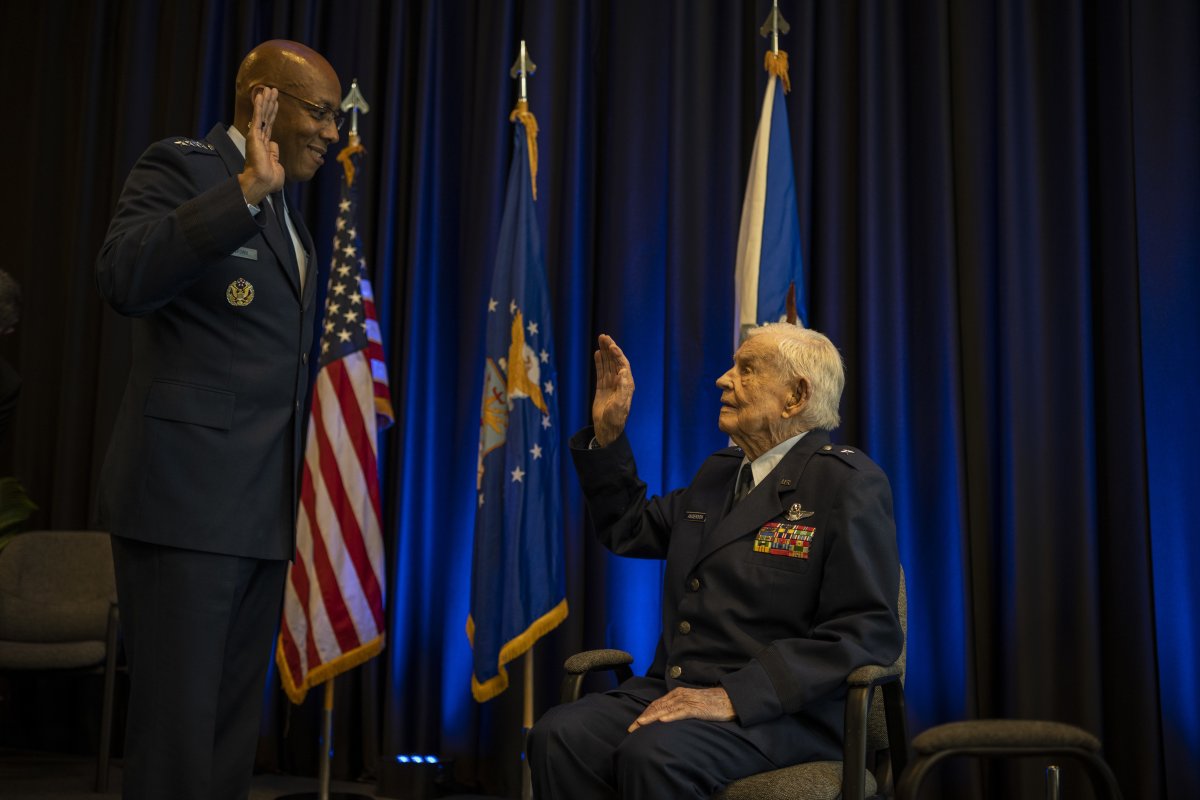
Fot. US Air Force official/Public Domain
On December 2. 2022, Col. Clarence E. ‘Bud’ Anderson was promoted to the honorary rank of brigadier general. Air Force Chief of Staff Gen. CQ Brown, Jr. presided over a ceremony at the Aerospace Museum of California.
Check General Clarence ‘Bud’ Anderson’s the ‘Old Crow’ aeroplane kits:
Aviation historian specialised in 357th Fighter Group.
This post is also available in:
 polski
polski


